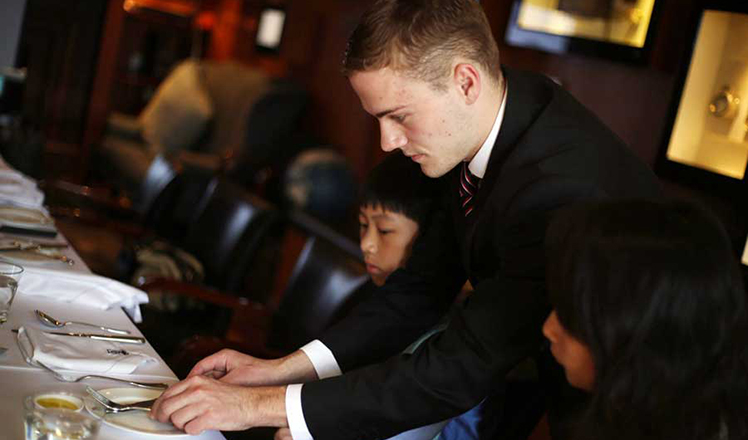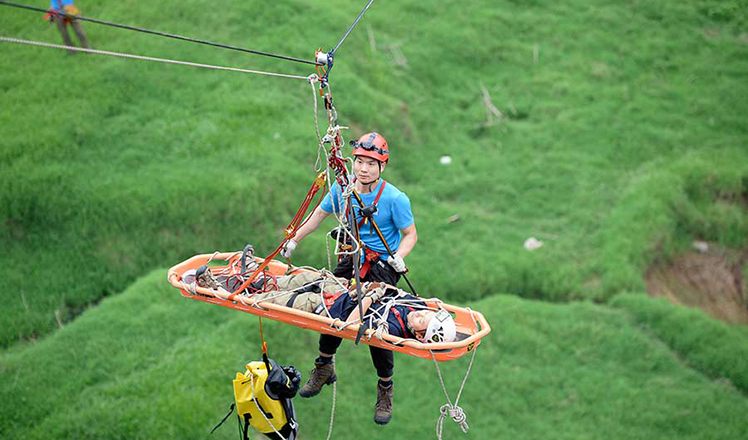Clearing mist over US’ Asia-Pacific policy
Updated: 2016-02-24 13:52
By Jin Kai(China Daily)
|
||||||||
 |
|
A formation of the Nanhai Fleet of China's Navy on Saturday finished a three-day patrol of the Nansha islands in the South China Sea. [Photo/Xinhua] |
The report of China deploying a missile system on Yongxing Island in the South China Sea came as a “surprise”, with the Western world citing it as another evidence of China’s “direct military provocation” to other countries and a threat to regional peace and order. The United States expects to hold “very serious talks” with China, and its allies have expressed concern over the development.
This is quite intriguing.
In the past, the international community mostly focused on the dispute over “Nansha Island” in the South China Sea which largely involved China and the Philippines. And despite Beijing’s clarifications and stand, Washington has made its policy very pro-Manila along with its actions in the Asia-Pacific, a region that is thousands of kilometers away from its coasts.
As a matter of fact, for several decades China has used limited defense measures on “Xisha Island”, which it has already announced is its territorial sea baseline and has nothing to do with the so-called militarization of the South China Sea. Therefore, this is not an intentional change that China had brought up at this moment. Instead, the US’ intention to confuse between “Xisha” and “Nansha” seems to be obvious and direct.
As to the confusion over “right to self-defense” and “militarization”, Article 51 of the UN Charter entitles the “inherent right” to self-defense to UN members, and for decades China’s self-defense measures on “Xisha” have not been seen as a controversial issue. But the West is currently trying to portray it as a controversial issue despite the fact that high-level officials in the US or its ally countries have not openly raised it. How could such self-defense measures suddenly become China’s “reckless step” intensifying militarization in the Asia-Pacific region?
Speaking of militarization, the US has decided to deploy 60 percent of its navy and air force in Asia-Pacific. Also, it keeps sending spy planes and battleships to reconnaissance China’s territory, and holds frequent joint military drills with its allies in the region and continues to sell huge amounts of weapons and other military equipment.
Talking about confusion over “policy” and “capability”, according to US media, the missiles deployed by China on Yongxing Island have a range of about 200 km and pose “a threat to all forms of civilian and military aircraft”. This is another ploy of the US to create confusion. China’s self-defense measures do not pose a threat to major sea lanes and air routes in the region, so long as some incidental “innocent passage” does not evolve into a serious provocative threat to China’s sovereignty.
The US maintains the most sophisticated weaponry systems, defensive and offensive, which are deployed across the world on the pretext of defending democracy, peace and order. Why cannot the same logic be applied to China? It should be made clear that instead of capability, a “wrong” policy can directly pose a threat to other countries and facilities. In this regard, China has put forward a three-point initiative to uphold peace and stability in the South China Sea, and “peace and stability” is just as crucial for China to uphold its sovereign rights, now and in the future.
Next we come to the confusion over “standard of militarization”. Since the Philippines and Vietnam have “militarized” the occupied islands, and the weapon sales and joint military exercises by the US continue, why must China’s self-defense measures be labeled a direct military provocation? This is double standard, which the US uses to firmly control the international discourse and tell the world that only China’s actions should be linked to militarization in the region — akin to a charge of "original sin".
To create confusion over "freedom of navigation", US officials constantly claim to have the right to protect the "freedom of navigation in the South China Sea". This is ridiculous. The Chinese military has never impeded civilian or commercial freedom of navigation in the South China Sea. All the same, it is easy for the US to blame China for the somewhat imaginary “threat” it poses to “freedom of navigation in the South China Sea” in the hope of convincing the international community or certain countries of its argument. However, the point is, it is the US military’s “freedom of navigation in the South China Sea” that could be limited by China once it is perceived as a threat to China’s sovereignty.
The confusion over “chicken first or egg first” seems logical, as it concerns which side first changed to the original peace, stability and order mechanism. The South China Sea had not been an “issue” before the 1970s when Vietnam and the Philippines abandoned their policies, which consented to China’s sovereign rights — especially after oil and gas were discovered in the region.
But despite that relative stability was maintained until Washington decided to “return” to Asia, and some countries jumped on to the US “bandwagon” to create a series of issues leading to a crisis. China’s detractors should know that the country’s so-called assertiveness came later and has remained reactive in nature. The US seems hell-bent on “revealing” certain actions of China and labeling them threats while ignoring the fact that China did not change nor does it intend to change the original mechanism for peace, stability and order in the region.
When it comes to confusion over “confidence and capability”, there seems to be an increasing gap between US confidence and its actual capability to dominate the South China Sea issue for its own purposes. By unconditionally allying with countries, supporting them with military equipment and advice, and blaming China for anything and everything, the US seems to tell the world that the South China Sea issue is all about Washington’s confidence and image, without considering how Beijing would react.
Could this be a symbolic war to propagate American values? What do American citizens really want? How far could the US’ confidence lead it in the region? All these questions seem to concern US confidence. But in a more specific context, this could be the narrative of a different story: the US’ lack of confidence in dealing with a rapidly rising China, which seems a little more confident and moderate by contrast.
Finally, China’s policies and actions in the South China Sea have been devoid of the “original sin”. China is a rising power that firmly upholds its sovereignty, as well as regional peace and stability, all of which are equally important. Although the generalization of the regional issue, in particular the oversimplification of China’s actions, could win the US certain supporters in the region, divergences and differences within America’s allies are emerging. For example, ASEAN leaders have refrained from criticizing China in the joint statement of the US-ASEAN special leaders’ summit.
The disputes in the South China Sea may go on, but no country, including China and the US, can afford total deterioration of the situation in Asia-Pacific. So it is time to clear the mist of confusions over the South China Sea and to maintain sustained peace and stability in the region. The world will not find an overassertive China, and it certainly does not need an unnecessarily impetuous US.
The author is a lecturer at the Graduate School of International Studies in Yonsei University, Republic of Korea.
- Global health entering new era: WHO chief
- Brazil's planning minister steps aside after recordings revelation
- Vietnam, US adopt joint statement on advancing comprehensive partnership
- European border closures 'inhumane': UN refugee agency
- Japan's foreign minister calls A-bombings extremely regrettable
- Fukushima impact unprecedented for oceans: US expert

 Stars of Lijiang River: Elderly brothers with white beards
Stars of Lijiang River: Elderly brothers with white beards
 Wealthy Chinese children paying money to learn British manners
Wealthy Chinese children paying money to learn British manners
 Military-style wedding: Fighter jets, grooms in dashing uniforms
Military-style wedding: Fighter jets, grooms in dashing uniforms
 Striking photos around the world: May 16 - May 22
Striking photos around the world: May 16 - May 22
 Robots help elderly in nursing home in east China
Robots help elderly in nursing home in east China
 Hanging in the air: Chongqing holds rescue drill
Hanging in the air: Chongqing holds rescue drill
 2.1-ton tofu finishes in two hours in central China
2.1-ton tofu finishes in two hours in central China
 Six things you may not know about Grain Buds
Six things you may not know about Grain Buds
Most Viewed
Editor's Picks

|

|

|

|

|

|
Today's Top News
Liang avoids jail in shooting death
China's finance minister addresses ratings downgrade
Duke alumni visit Chinese Embassy
Marriott unlikely to top Anbang offer for Starwood: Observers
Chinese biopharma debuts on Nasdaq
What ends Jeb Bush's White House hopes
Investigation for Nicolas's campaign
Will US-ASEAN meeting be good for region?
US Weekly

|

|








